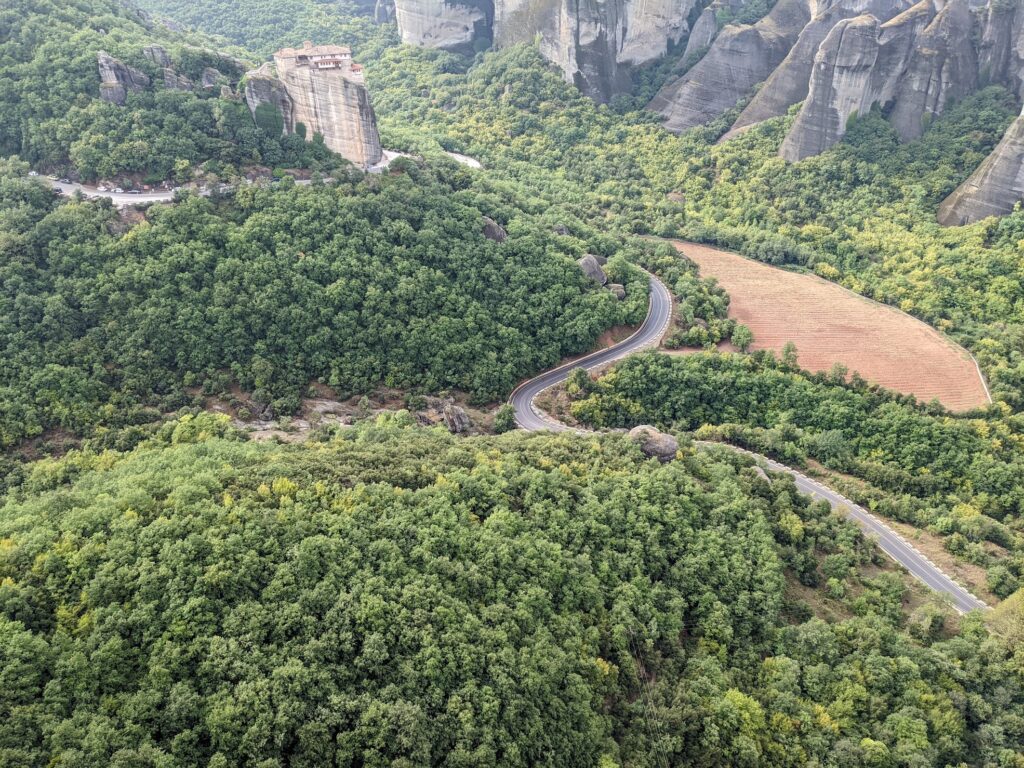We arrived in Kalambaka via two trains from Athens; one fast and comfortable, and the other fast and rattly. That evening, we went out for a late dinner at the creatively named Restaurant Meteora, and I had possibly my favourite ever slow cooked lamb dish. The sort of dish where the meat is so succulent that it just falls off the bone, almost as if it had been placed on top of the bone for presentation purposes.

There had been thunder rolling around the valley all afternoon and we’d even received an extreme weather warning on our phones from the Greek government, so I was fully expecting this visit to Meteora to be a complete wash out. Still, Sara wasn’t giving up that easily and set an alarm so that we could reassess the situation in the morning. I couldn’t quite believe it when Sara, while looking out the window, informed me that it was still raining, but not nearly enough to stay in bed and that I had to get up. Begrudgingly, I packed a bag full of snacks, and we rushed to catch the first bus up the mountain. The views over the mountains of Meteora, topped by precariously perched monasteries, were spectacular even from the bus window. It was already clear that this was not an opportunity to pass up for fear of a bit of rain.

Without much of a planned itinerary (other than a vague idea that we would do as much as possible under our own steam), we hopped off the bus at the Great Meteoron Monastery, the largest of the six mountaintop monasteries. A queue was already forming on the steep steps up to the entrance, so we opted to start our excursion with a hike to the neighbouring Monastery of Varlaam, which required a steep descent and ascent along footpaths between trees.
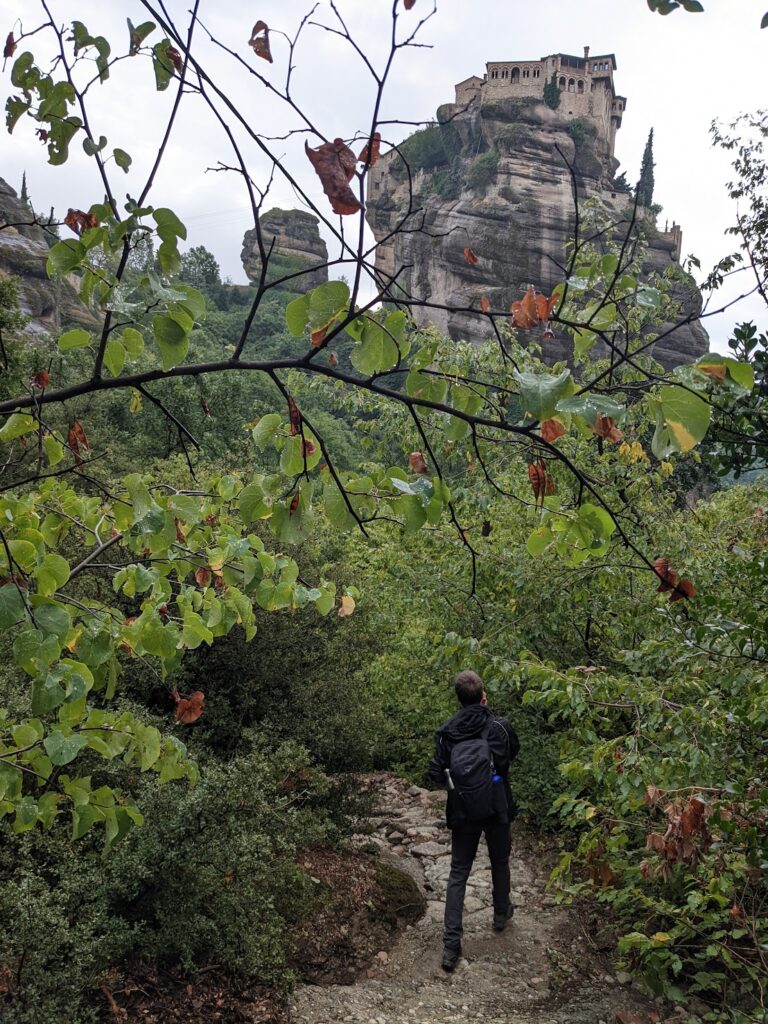
This monastery had an incredible terrace, with views good enough to make me momentarily consider life as a monk.
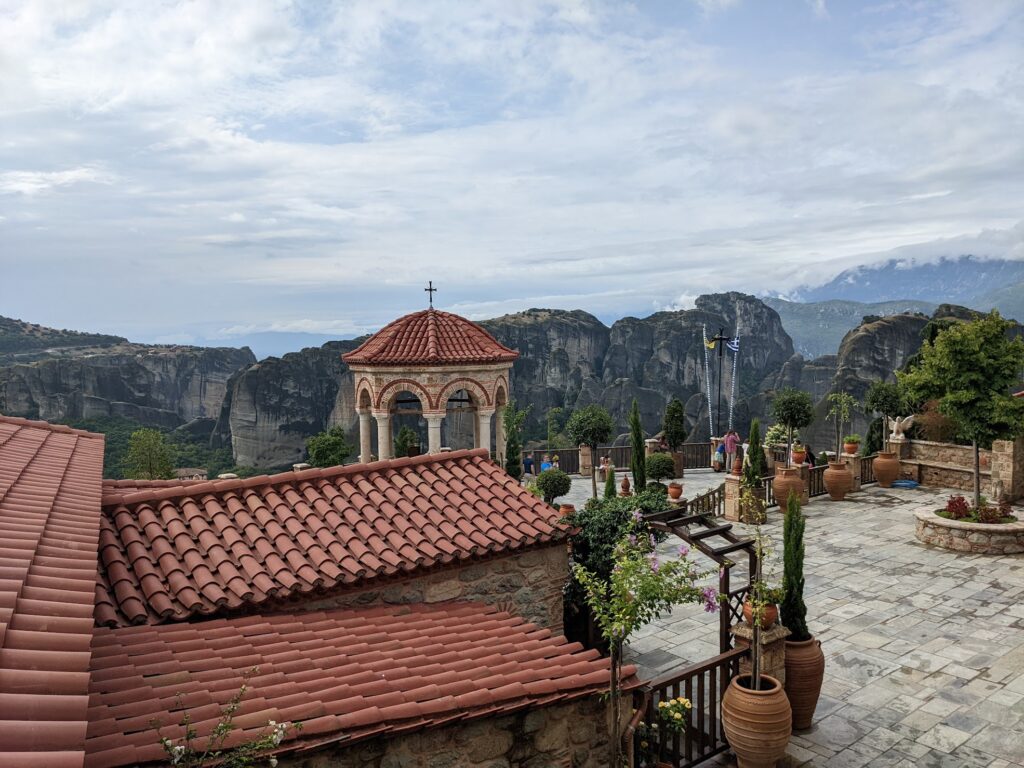
Inside the first room of the monastery was a giant, room-sized wine barrel, which unsurprisingly appealed to Sara. Maybe we could both find a home in the mountains of Meteora.


Although today the monastery can be accessed on foot, right up until the 1930s monks had to be lifted via a winch, rope, hook and net. Apparently, when asked how often the ropes were replaced, the monks replied “when the Lord lets them break.”
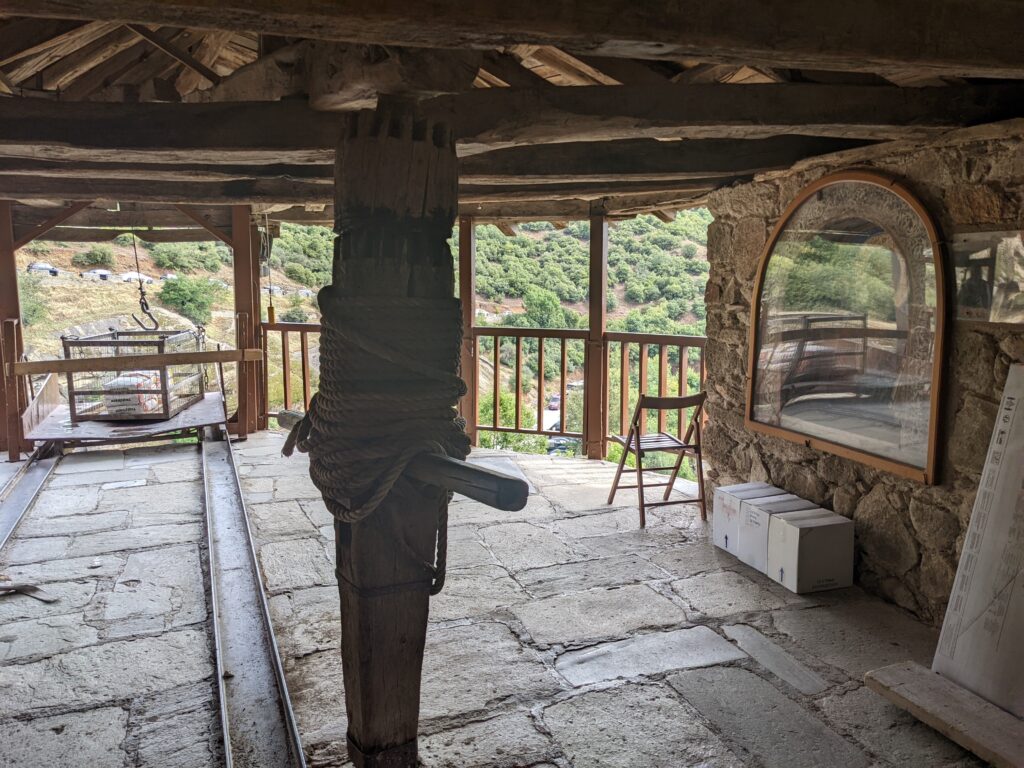
Our hike continued on to a convent via another steep descent and ascent, and the stunning views continued as well.
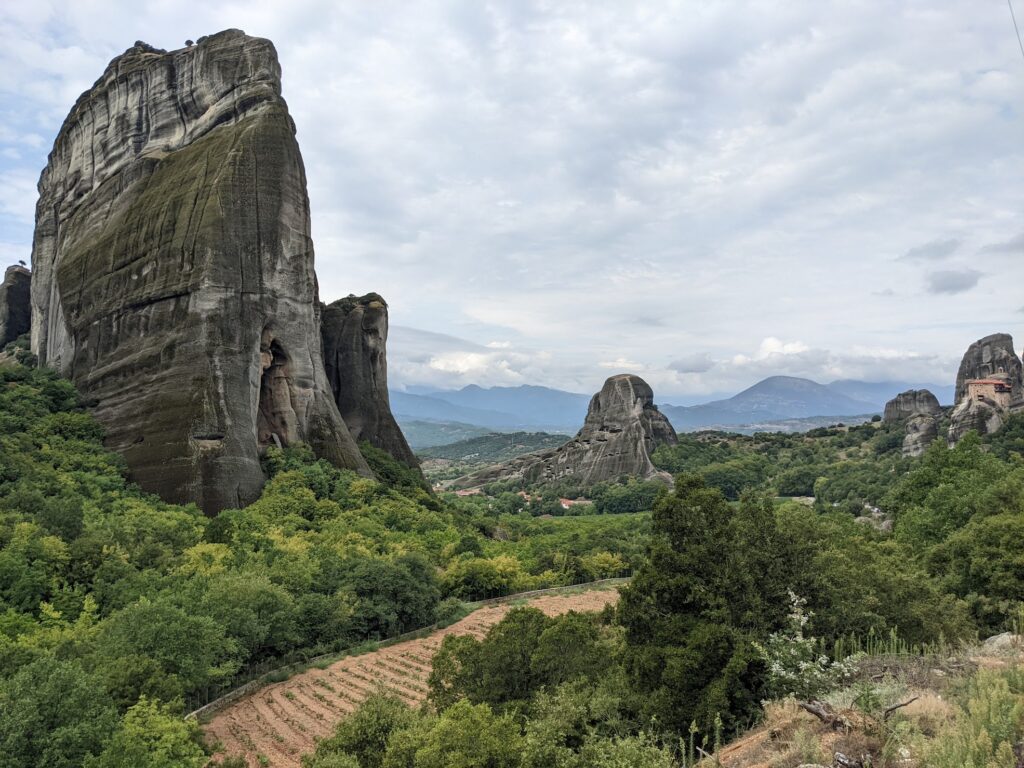
This convent was much smaller and less extravagant than the first monastery we visited, but that was probably much to do with the fact it was even more precariously perched on the rock. The nuns tended to their immaculate garden and produced honey and other goodies that were available for purchase.


The route to our final monastery of the day was a combination of footpaths and road walking, passing a couple of breathtaking viewpoints.
We were flagging by this point, so paused on a hidden ledge just beneath one rocky viewpoint to recharge and enjoy one of the best snack-views of our lives.


The last stop on our improvised route was the Monastery of Agias Triados, and fortunately we learned that it was closed before hiking the ridiculously high set of steps up to its entrance. Now, I realise that you’re never going to believe me, but we genuinely had no idea that this monastery was also a filming location for yet another Bond film. Slightly less glamorous than Italy, this spot was graced with Roger Moore pretending to scale the cliff face in For Your Eyes Only. The pace of the sequence doesn’t quite match that of the Daniel Craig era, so I’d recommend watching the clip on double speed to get the gist.
We couldn’t find much information online about hiking the Meteora mountains, so I’ve done my best to draw out our 5-6 hour itinerary on the map below. The bus route is shown in blue and the hiking route in black, though beware: the walking route included a lot of steps and zigzags that aren’t captured on the map. We’re big fans of the Footpath mobile app, which reliably plots footpaths that are often missing from Google Maps.
